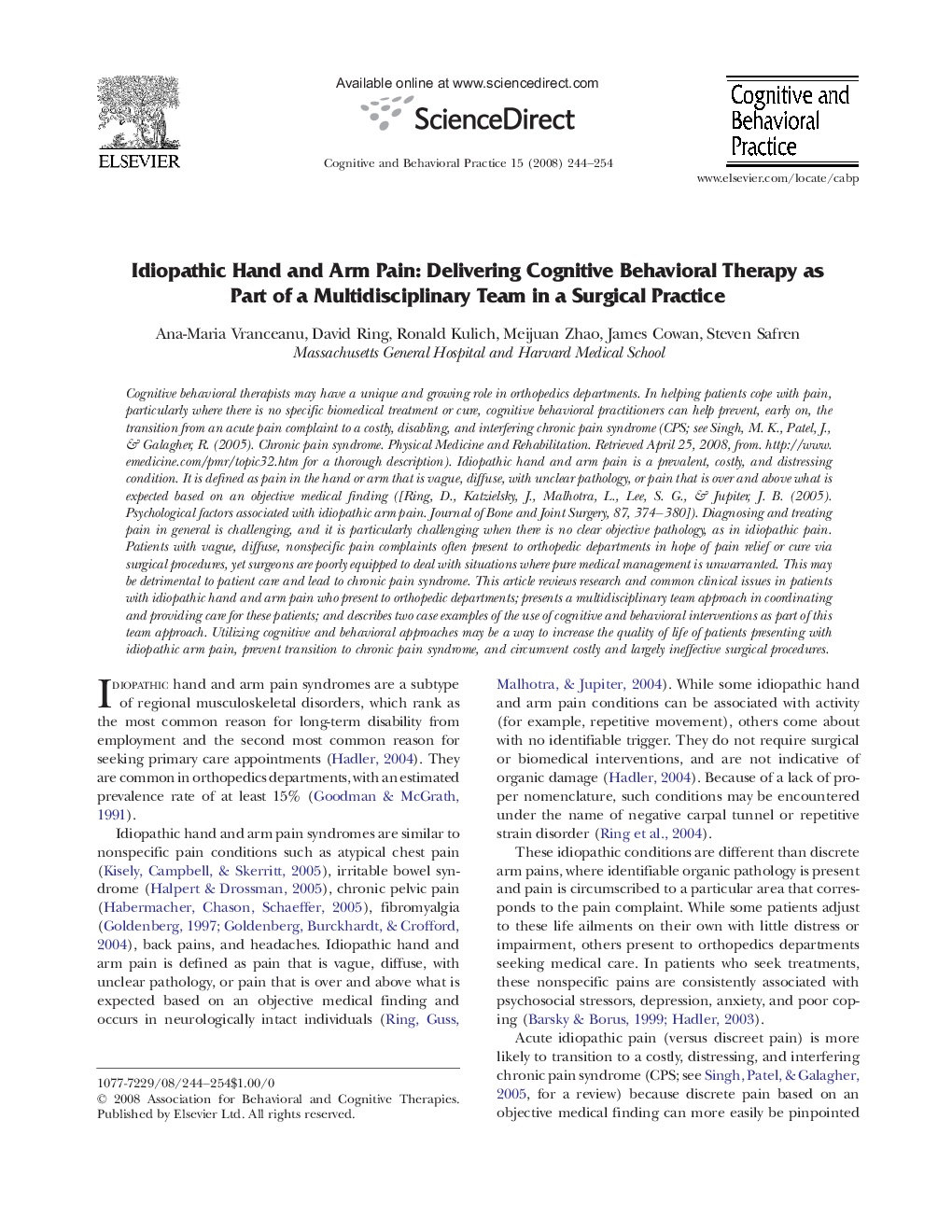| Article ID | Journal | Published Year | Pages | File Type |
|---|---|---|---|---|
| 904721 | Cognitive and Behavioral Practice | 2008 | 11 Pages |
Cognitive behavioral therapists may have a unique and growing role in orthopedics departments. In helping patients cope with pain, particularly where there is no specific biomedical treatment or cure, cognitive behavioral practitioners can help prevent, early on, the transition from an acute pain complaint to a costly, disabling, and interfering chronic pain syndrome (CPS; see Singh, M. K., Patel, J., & Galagher, R. (2005). Chronic pain syndrome. Physical Medicine and Rehabilitation. Retrieved April 25, 2008, from. http://www.emedicine.com/pmr/topic32.htm for a thorough description). Idiopathic hand and arm pain is a prevalent, costly, and distressing condition. It is defined as pain in the hand or arm that is vague, diffuse, with unclear pathology, or pain that is over and above what is expected based on an objective medical finding ([Ring, D., Katzielsky, J., Malhotra, L., Lee, S. G., & Jupiter, J. B. (2005). Psychological factors associated with idiopathic arm pain. Journal of Bone and Joint Surgery, 87, 374 --380]). Diagnosing and treating pain in general is challenging, and it is particularly challenging when there is no clear objective pathology, as in idiopathic pain. Patients with vague, diffuse, nonspecific pain complaints often present to orthopedic departments in hope of pain relief or cure via surgical procedures, yet surgeons are poorly equipped to deal with situations where pure medical management is unwarranted. This may be detrimental to patient care and lead to chronic pain syndrome. This article reviews research and common clinical issues in patients with idiopathic hand and arm pain who present to orthopedic departments; presents a multidisciplinary team approach in coordinating and providing care for these patients; and describes two case examples of the use of cognitive and behavioral interventions as part of this team approach. Utilizing cognitive and behavioral approaches may be a way to increase the quality of life of patients presenting with idiopathic arm pain, prevent transition to chronic pain syndrome, and circumvent costly and largely ineffective surgical procedures.
